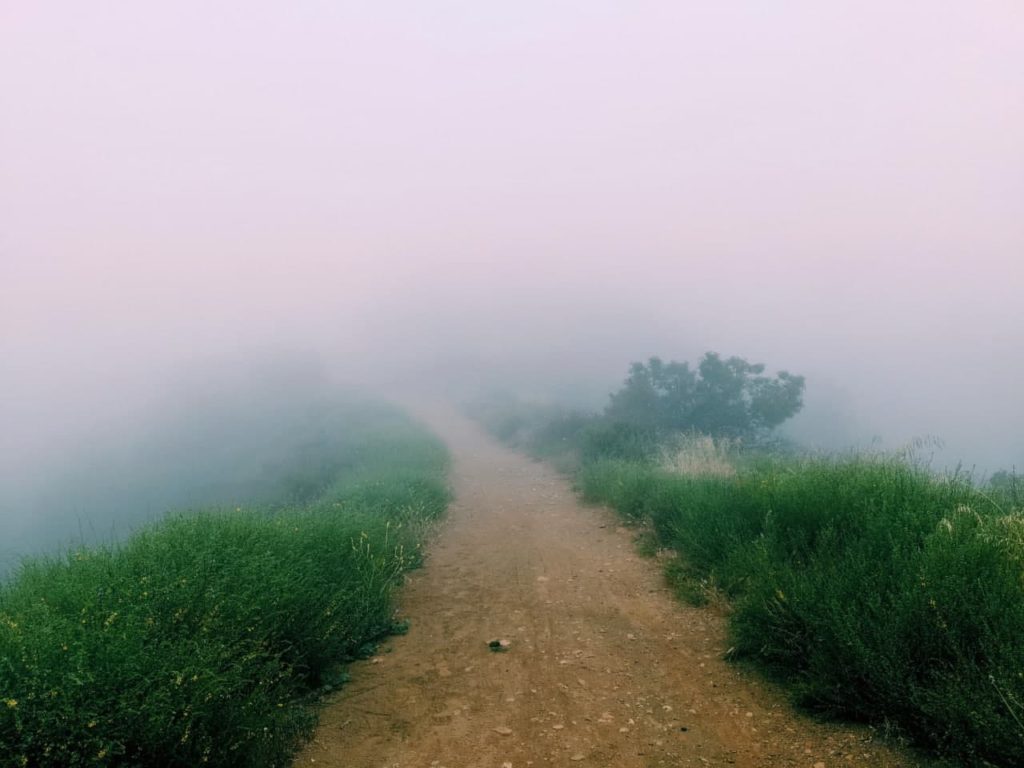The importance of sound design wasn’t new to me when I started this class. I had studied sound design as part of game development and had attended a sound panel at an IGDA meeting (International Game Developers Association)

I think the first time I really noticed how important sound design was to immersive design was on the nature trail at the beginning of Silent Hill 2. Everything is foggy and gray and you’re walking down a gravel trail, but it sounds like someone is following you. When you stop, it stops. The sound was very important in Silent Hill 2 because the entire game was shrouded in dense fog. But, highlighting that was the realization of how much detail went into that sound design — that gravel sounds like gravel and blacktop sounds like a hard cement surface. Layers of sound make the world feel more real.
This can be experienced again in Hellblade: Senua’s Sacrifice. This game uses binaural sound to help the player experience schizophrenia. You don’t notice the ambient sounds as much, but it is a game in which playing with or without headphones affects the experience. Hint: You really need the headphones, even if you’re playing alone in a quiet space.
Yet, when it came time to do this assignment, I knew it was going to be tough. I still thought of sound design as something you hand over to the sound guys with some direction. Don’t get me wrong. I knew the direction had to be specific. For instance:
- “I want this to be fast and angry. “
- “This part should feel comforting and compassionate. “
I also knew that working with voice-over actors was still like directing. They’re still actors. Still, I picture sound design more like this: Lead Sound Designer sits in front of the movie and writes the score while watching the movie over and over. Similarly, sound effects are added in the appropriate places.
The choices the sound designer makes while scoring the movie will greatly affect the overall aesthetic of the film. The comical tune at 1:17 really doesn’t work for this scene, does it? But, neither does sad and thoughtful. It’s not just that we know the movie and what’s supposed to be happening here. It’s the scene itself.
When it came to designing for my land, I realized I had to own it. It is my design, after all. Don’t get me wrong — no large scale project is completed by one person. You absolutely need to surround yourself with experts in their fields and listen to them. Bring them on early; ask for their input. But, as the designer, pulling off the vision starts with you.
I realized that I had to have a vision for my land’s aesthetic, and I couldn’t pass the buck to the experts.
I started by listening to soundscapes from Disney because I was fascinated with stories I’d heard about all of the ambient sounds in Disney parks being shut off on 9/11 when the parks were being evacuated. Cast Members said they’d never heard the parks without the ambient music. It was disquieting according to people who were there. This is the first that I’d heard anything about the ambient sounds.
It’s difficult to find these soundtracks without knowing specifically what you’re looking for and much of what I did find seemed a little cloying. I doubted the validity of those tracks.
Next I searched for soundtracks from the movie, Ready Player One. I wanted to see what choices Spielberg and John Williams came up with.
I’ll be honest. This didn’t help me. Even when finding multiple tracks, I found that the music didn’t tell me what was going on in the scene. I wound up watching the movie again just to pay attention to the sound design. In reality, I should have minimized the screen and just listened to the movie. Now, however, I could see where hope, joy, or tension were all reflected in the music.
The question I was having a difficult time answering wasn’t reflected in the score, however. What does it sound like in The Stacks? What does the music make you feel like? What does it sound like in the city? Nope, these designs decisions hadn’t been made for me. I didn’t draw inspiration for my land from it.
I went to look for documentaries about how movies were scored and finally learned the lesson for this class.
How To Do Sound Design When You’re Not A Sound Designer
Musical score and sound design as part of the overall design needs to be done like everything else. You need to create a palette, storyboard or inspiration board for your composer or sound design team.
In practice, this will look like temp tracks. A temporary track is a piece of existing music that is similar to what you want your soundtrack to sound like at any given point in, in this case, your land.
For instance, does this seem familiar?
George Lucas may have given this to composer John Williams as an example of what he wanted and John Williams took it from there.
In reality, this could be two pieces on my decisions for the sounds for my land, but I’ll just give the cliff notes. The present layers of sounds would be nature — frogs, crickets, birds, pets, the wind in the grass and trees. The music would be cheerful, yet summery. To me, music is different in summer. The city would sound more hurried and hard-angled. The layers of ambient sound are more white noise, machine-related noises. Still, I don’t want people to feel rushed through this area. You want people to want to stay here. It’s fun. The Stacks area would be sad and thoughtful with almost no natural ambient noise. You’d hear the sounds of people throwing trash on a pile, papers blowing in the wind, and the cacophony of the sounds made by people living in close quarters.
SUMMARY
- Whether you are creating a marketing campaign, a trade show booth, an experience or a land, sound is part of telling that story and getting your audience to feel.
- Decide how you want participants to feel as they move through your experience. Create a storyboard that includes tracks that feel like you want your score to feel.
- Get a sound designer involved early. Be specific about what you want, but acknowledge his/her expertise and listen to them.
- Sound, like lighting design, happens in layers.
- What are the ambient layers of your environment? If the area was quiet, what would you hear?
- The musical layer will use rhythm, tone, and speed to create a mood for your environment.
Don’t pencil-whip this part. Working to decide on a sound design for your experience will set your designs apart for reasons that other designers will have difficulty pinpointing.








